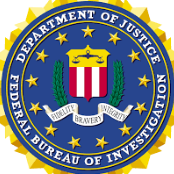Thai King to be crowned in coronation ceremonies May 4-6 - palace
-
Recently Browsing 0 members
- No registered users viewing this page.
-
Topics
-
-
Popular Contributors
-
-
Latest posts...
-
27
Crime Russian Man Assaulted and Robbed in Pattaya
Fashion police can find you anywhere and anytime! -
12
Report Thailand's Household Debt Soars to 16.42 Trillion Baht with Rising Risks
2000 baht would barely cover the interest per month. -
79
California in Uproar as Newsom Condemns Trump’s Troop Deployment as ‘Deranged Fantasy’
You really think they won't move and start stealing sneakers and burning Waymos on the next block? -
23
Is it possible to rehabilitate a bargirl back into polite society?
Odds are stacked against you. When things go south, as all relationships do at some point, she will find it very easy to slip back into bar girl mode and not talk things through. Not saying this for all. But better to look elsewhere for long term relationships. -
29
Report British Tourists Charged with Smuggling £1m Cannabis After Thai Trip
Are there statistics on how many have made it into the UK from Thailand with a massive amount of marijuana without being caught? Because I can't see the risk-reward benefit to this endeavor. -
0
Changing reason for Extension (Rayong Immigration)
I want to change my 10-year-old son's Extension of Stay from being my dependent (I have a Work Extension) to his own Education extension. I also want to change my wife's Extension from my dependent, to a Parent/Guardian Extension for our son. My son's school will provide all the paperwork, however, they seem to think it will be necessary for both my son and my wife to leave Thailand and get new Non-O visas. Both them had their original Non-O visas from London in 2016 and have extended every year since then. I'm sure the school are right, but I would like to explore the option of using a visa agent/specialist, with Rayong Immigration contacts, who might be able to get the change done without needing to leave Thailand. If this requires paying an extra fee, I would be happy to do so. Does anyone know a reputable agency covering Rayong, who might be able to help and/or advise? Thanks.
-
-
Popular in The Pub




.thumb.jpeg.d2d19a66404642fd9ff62d6262fd153e.jpeg)






Recommended Posts